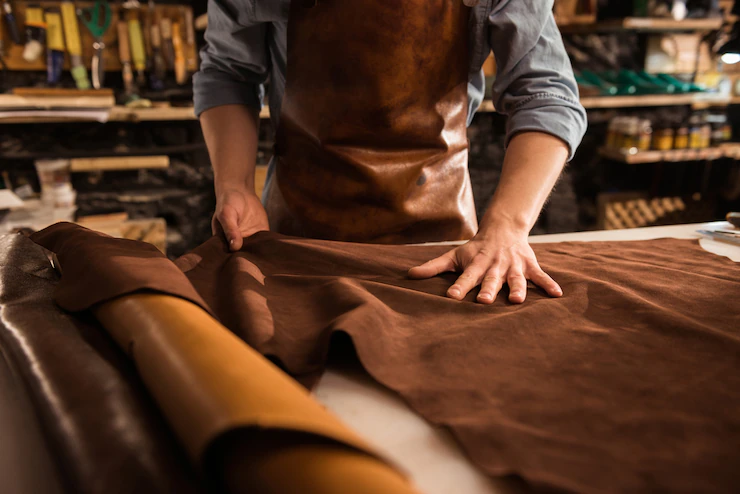- Rich History:
South Africa has a long history in the leather industry, with its roots dating back to the early days of European colonization. The industry has evolved significantly since then, combining traditional techniques with modern technology. - Raw Material Availability:
South Africa has a substantial supply of raw materials for the leather industry, including a large livestock population that provides hides and skins. Cattle, sheep, and goats are the primary sources of raw materials. - Job Creation:
The leather industry plays a crucial role in job creation and contributes to the country’s economy. It provides employment opportunities for a significant number of people, both in the primary production of hides and skins and in the manufacturing of leather products. - Tanning Processes:
Tanning is a critical process in the leather industry, and South Africa has both traditional and modern tanneries. These tanneries use various techniques, such as vegetable tanning, chrome tanning, and eco-friendly tanning methods, to produce high-quality leather. - Export Opportunities:
- South Africa’s leather industry is export-oriented, with a focus on supplying international markets. The country exports a wide range of leather products, including shoes, handbags, belts, upholstery, and automotive leather.
- Quality Standards:
The South African leather industry adheres to stringent quality standards to ensure that its products meet international requirements. This commitment to quality has helped the country gain a reputation for producing premium leather goods. - Sustainability:
With growing awareness of environmental concerns, the South African leather industry has embraced sustainability practices. Efforts are being made to minimize waste, reduce the use of harmful chemicals, and promote responsible sourcing of raw materials. - Collaboration and Support:
Various organizations and associations support the South African leather industry. These include the South African Footwear and Leather Export Council (SAFLEC), which promotes the export of leather goods, and the Leather and Leather Products Industry Training Authority (LLPITA), which focuses on skills development and training. - Value Addition:
The leather industry in South Africa is not limited to the production of raw materials; it also emphasizes value addition. Many companies are involved in the design, manufacturing, and branding of leather products, contributing to the growth of the industry. - Market Challenges:
While the South African leather industry has seen significant growth, it also faces challenges. These include competition from low-cost producers in other countries, fluctuating raw material prices, and the need to keep up with changing consumer preferences and trends.
It’s important to note that this information is accurate up until my knowledge cutoff in September 2021. For the most up-to-date and specific details about the current state of the leather industry in South Africa, it’s recommended to consult recent reports or industry sources.
Join 'Farmers Mag' WhatsApp Channel
Get the latest Farming news and tips delivered straight to your WhatsApp
CLICK HERE TO JOIN






